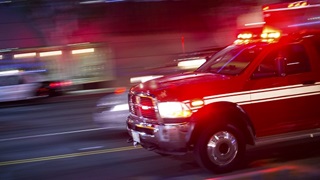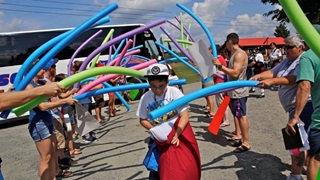Help in a heartbeat for the maestros of emergency medicine
Saskatchewan paramedics add automatic chest compression system to lifesaving arsenal
When you’re on the front lines of emergency medicine in a remote or rural area, every moment matters.
In the case of a heart attack, every action must be intentional and purposeful—because survival rates following sudden cardiac arrest are rather bleak if external chest compressions, as part of cardiopulmonary resuscitation (CPR), aren’t performed quickly and correctly. CPR, along with the use of automatic external defibrillators (AEDs) and basic airway management, is a fundamental component of basic life support when a heart stops beating.
Paramedics in Saskatchewan’s Heartland Health Region now have that critical extra set of hands, metaphorically speaking. With help from an Enbridge Safe Community donation, the region has purchased a new piece of technology—the LUCAS Chest Compression System—that performs this work automatically.
“Being a rural EMS service, we don’t always have extra attendants to send on cardiac arrest calls,” notes Richard Brenner, the EMS coordinator for the Heartland Health Region in the Outlook and Dinsmore areas of west-central Saskatchewan.
“This device allows the attendants to perform other lifesaving skills, rather than focusing solely on manual chest compression.”
According to the Heart and Stroke Foundation, there’s a cardiac arrest in Canada once every 13 minutes. Up to 85 percent of cardiac arrests occur outside of hospitals, in public places or homes, but the chance of surviving cardiac arrest is doubled when CPR and an AED are applied.
The LUCAS Chest Compression System performs at least 100 chest compressions per minute, and can be deployed quickly with minimal interruption to patient care.
The Heartland Health Region is home to more than 44,000 people living in 57 communities and 44 rural municipalities. “That’s a total of 41,770 square kilometers. We service a large area that includes those working in the oil and gas industry, along with farming,” says Brenner.
Enbridge’s Safe Community donation of $17,000, which helped purchase this state-of-the-art system, is assisting EMS staff in staying current with constantly evolving technology in emergency medicine, says Brenner.
“Our goal is to providing the very best care in our region, and it’s donations such as the one from Enbridge that allow us to purchase equipment, and enable our staff to excel at our profession,” he says.
Enbridge’s Safe Community program supports first responder organizations in the communities near our pipelines and facilities with equipment, training and education.
“Outlook is one of our key right-of-way communities, and supporting their emergency management services is a way for us to give back,” says Lisa Seeley, an Edmonton-based public affairs advisor with Enbridge.
“We believe it’s essential to support our first responder organizations in the communities where we live and operate. The Safe Community program is our way of focusing funds to enhance the capabilities of these first responders.”










